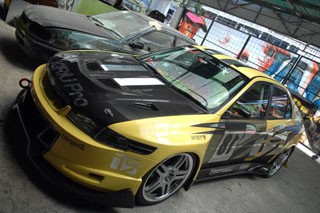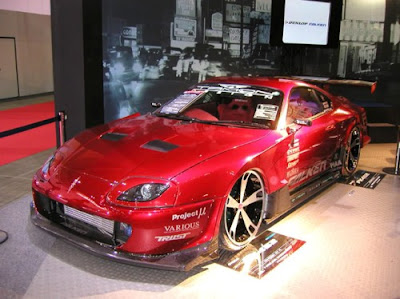
The Mustang's teat is red and sore from how much Ford has been milking its pony car in recent years. Not only Ford, but everyone. Tuners and custom chops have created new-school versions of classics like the Twister Special and GT500KR, while Ford has been keen on whoring out nameplates like California Special and Mach 1.
 Thankfully, the Mach 1 played its role well: in-line with the original concept of a model between the GT and the Cobra, just retro enough, and packing a legitimate performance boost over the GT.
Thankfully, the Mach 1 played its role well: in-line with the original concept of a model between the GT and the Cobra, just retro enough, and packing a legitimate performance boost over the GT.
Now, after what feels like ages...the Boss is back. Had to be said, you knew it was coming, and that's the only way to say it. Thankfully, the new Boss 302 will be trying hard to do the nameplate and its Trans-Am heritage justice. To make sure it can run with the modern performance crew, Ford claims to have benchmarked its new Boss against the M3 - yes, the BMW. That's a start...
"The decision to build a modern Boss was not entered into lightly," said Derrick Kuzak, group vice president, Global Product Development. "The entire team at Ford felt the time was right and with the right ingredients, the world-class 2011 Mustang could support a successful, race-bred, worthy successor to the original Boss 302. For us that meant a production Mustang that could top one of the world's best – the 2010 BMW M3 – in lap times at Laguna Seca. We met our expectations."
Here are the specs:
- 5.0-liter V8, 440 horsepower, 380 lb-ft of torque, 155 mph, 1.0 g on the skidpad
- Engine: new intake management with a "runners-in-the-box plenum/velocity stack" setup, more aggressive cams, re-tuned custom exhaust setup (scroll down for an excerpt explaining this badness)
- Transmission: short-throw shifter with new knob, close-ratio gearing, heavy-duty clutch
- Driveline: 3.73 gears, limited slip differential, optional Torsen LSD
- Suspension: lowered 11mm in front, 1mm in back, uprated springs, stiffer bushings, thicker rear sway bar, standard 5-way adjustable shocks/struts
- Gadgetry: 3-way adjustable electronic steering, unique traction/stability control programs
- Brakes: Brembo 4-piston calipers and 14-inch vented rotors (front), standard GT fare with special pads (rear), low-compressibility brake lines
- Wheels: alloys, 19x9 front / 19x9.5 rear wrapped in Pirellis
- Interior: Alcantara-wrapped steering wheel, new cloth/faux suede seats, optional Recaro seats, dark metallic trim, unique sill plates, 11 lbs of sound-deadening material removed
- Exterior: black or white roof panel with matching C-stripe, Competition Orange / Kona Blue Metallic / Race Red / Performance White / Yellow Blaze Tri-Coat Metallic, new front styling, new aerodynamic pieces
Mustang chief engineer Dave Pericak says, "We were either going to do it right or not do it at all – no one on the team was going to let Boss become a sticker and wheel package." Damn right.
Of course, this is still built by Ford, so don't be surprised if you see a special edition of the special edition. Oh, there it is! The Laguna Seca Boss 302, "named for the track where Parnelli Jones won the 1970 Trans-Am season opener in a Boss 302." The Laguna Seca edition is a more track-day-oriented road car with a beefed-up chassis and aerodynamics from Ford Racing's Boss 302R.
By Phil Alex
























































































